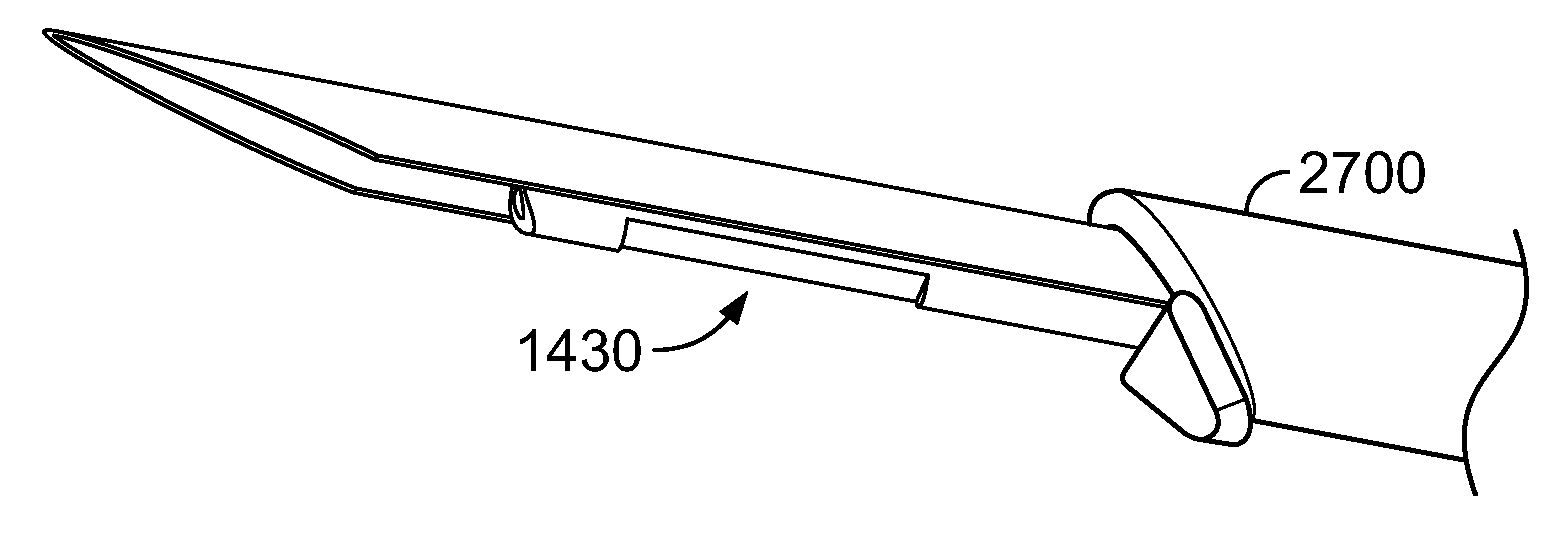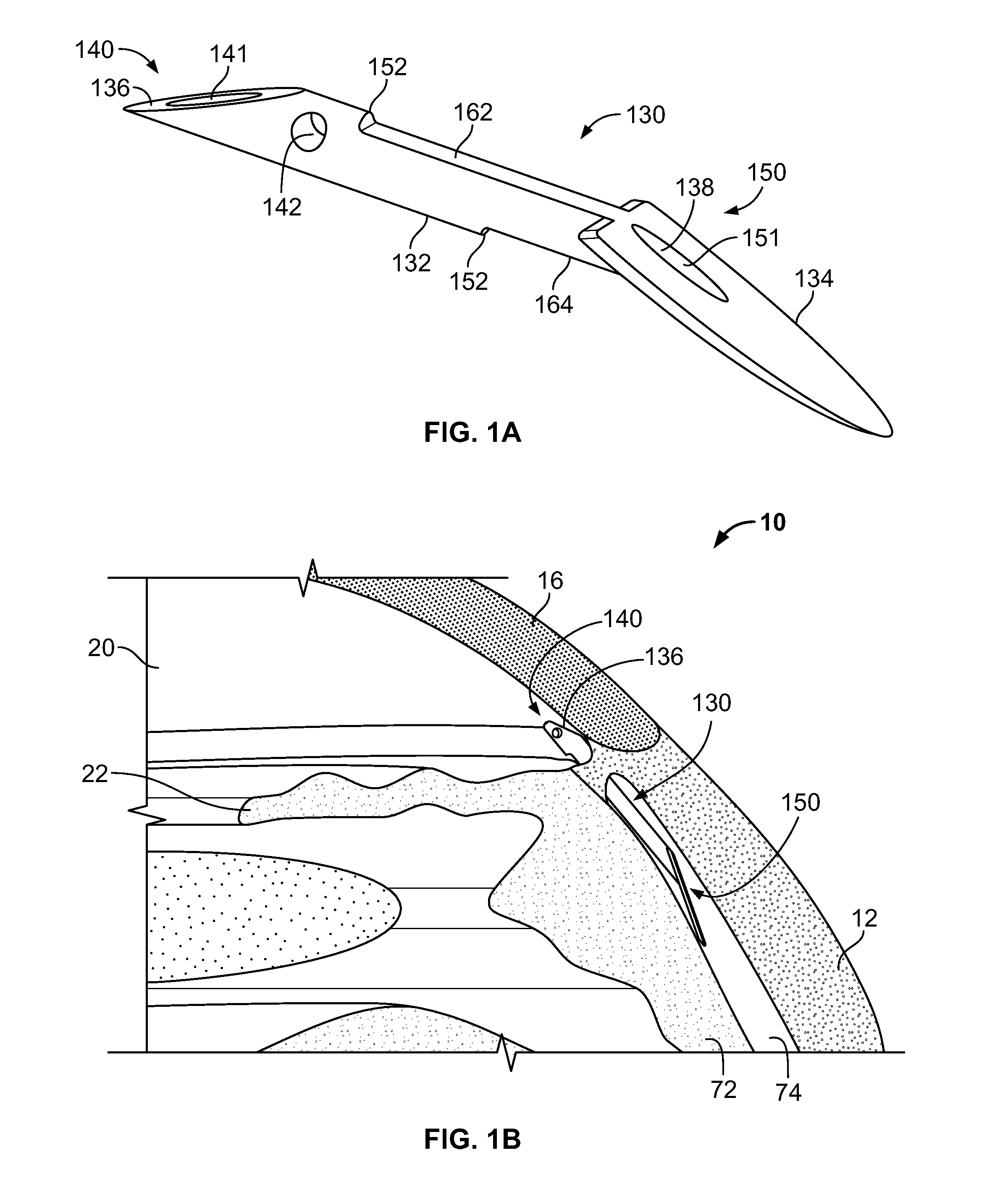Fluid drainage device, delivery device, and associated methods of use and manufacture
a technology of fluid drainage device and delivery device, which is applied in medical science, surgery, diagnostics, etc., can solve the problems of ganglion cell death progressing in the retina, affecting the effect of vision, and limiting the visual field, so as to reduce the profile
- Summary
- Abstract
- Description
- Claims
- Application Information
AI Technical Summary
Benefits of technology
Problems solved by technology
Method used
Image
Examples
Embodiment Construction
[0113]FIG. 1A shows a perspective view of an implant 130 in accordance with a first embodiment. The implant 130 in FIG. 1A is similar to implants described and illustrated in U.S. patent application Ser. No. 08 / 975,386, filed Nov. 20, 1997, now U.S. Pat. No. 6,203,513, the disclosure of which, as mentioned above, is incorporated by reference herein.
[0114]As can be seen in FIG. 1A, the implant 130 comprises a needle-like tube 132 and a disk or flange 134. The plane of the flange 134 forms an angle with the tube 132. The tube 132 has an inlet end 140, an outlet end 150, and a tube passage 138 extending between inlet end 140 and the outlet end 150, with the tube passage 138 having an axial inlet 141 and an axial outlet 151. The flange 134 is connected to the tube 132 at its outlet end 150.
[0115]The entire implant may be very small, and the size will depend on the intended application and implantation site. As one example, the tube 132 may have a length of about 2 mm to about 3 mm and a...
PUM
| Property | Measurement | Unit |
|---|---|---|
| thickness | aaaaa | aaaaa |
| diameter | aaaaa | aaaaa |
| width | aaaaa | aaaaa |
Abstract
Description
Claims
Application Information
 Login to View More
Login to View More - R&D
- Intellectual Property
- Life Sciences
- Materials
- Tech Scout
- Unparalleled Data Quality
- Higher Quality Content
- 60% Fewer Hallucinations
Browse by: Latest US Patents, China's latest patents, Technical Efficacy Thesaurus, Application Domain, Technology Topic, Popular Technical Reports.
© 2025 PatSnap. All rights reserved.Legal|Privacy policy|Modern Slavery Act Transparency Statement|Sitemap|About US| Contact US: help@patsnap.com



